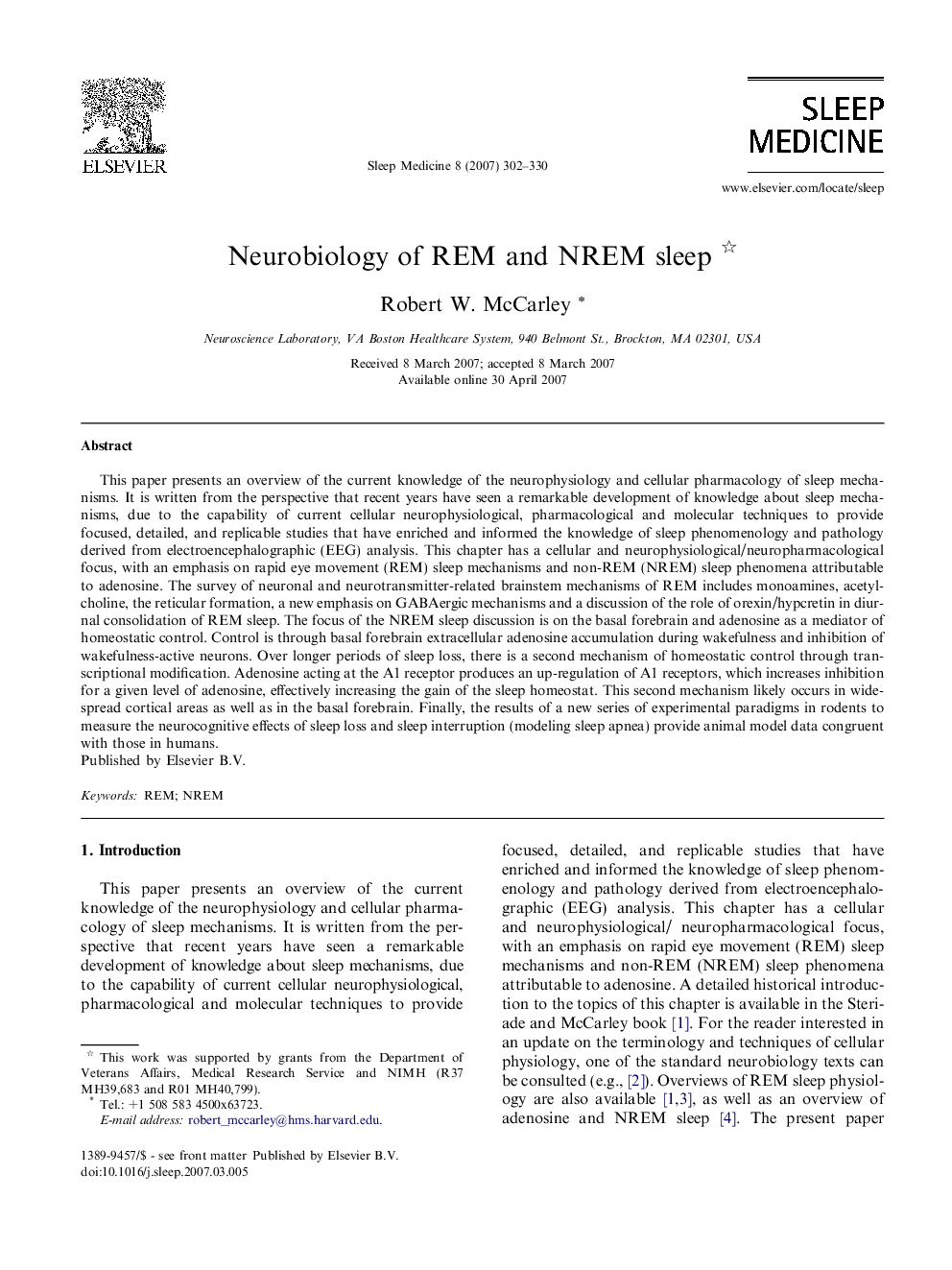| کد مقاله | کد نشریه | سال انتشار | مقاله انگلیسی | نسخه تمام متن |
|---|---|---|---|---|
| 3177435 | 1200301 | 2007 | 29 صفحه PDF | دانلود رایگان |

This paper presents an overview of the current knowledge of the neurophysiology and cellular pharmacology of sleep mechanisms. It is written from the perspective that recent years have seen a remarkable development of knowledge about sleep mechanisms, due to the capability of current cellular neurophysiological, pharmacological and molecular techniques to provide focused, detailed, and replicable studies that have enriched and informed the knowledge of sleep phenomenology and pathology derived from electroencephalographic (EEG) analysis. This chapter has a cellular and neurophysiological/neuropharmacological focus, with an emphasis on rapid eye movement (REM) sleep mechanisms and non-REM (NREM) sleep phenomena attributable to adenosine. The survey of neuronal and neurotransmitter-related brainstem mechanisms of REM includes monoamines, acetylcholine, the reticular formation, a new emphasis on GABAergic mechanisms and a discussion of the role of orexin/hypcretin in diurnal consolidation of REM sleep. The focus of the NREM sleep discussion is on the basal forebrain and adenosine as a mediator of homeostatic control. Control is through basal forebrain extracellular adenosine accumulation during wakefulness and inhibition of wakefulness-active neurons. Over longer periods of sleep loss, there is a second mechanism of homeostatic control through transcriptional modification. Adenosine acting at the A1 receptor produces an up-regulation of A1 receptors, which increases inhibition for a given level of adenosine, effectively increasing the gain of the sleep homeostat. This second mechanism likely occurs in widespread cortical areas as well as in the basal forebrain. Finally, the results of a new series of experimental paradigms in rodents to measure the neurocognitive effects of sleep loss and sleep interruption (modeling sleep apnea) provide animal model data congruent with those in humans.
Journal: Sleep Medicine - Volume 8, Issue 4, June 2007, Pages 302–330